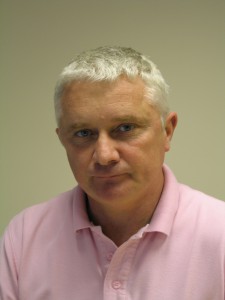Kevin Moorhouse: Why Gearhouse Broadcast is installing 115 EVS servers worldwide

Kevin Moorhouse: “We started taking delivery of the machines just before the World Cup, and the whole upgrade is due to be completed by the end of September”
Gearhouse Broadcast’s ongoing massive upgrade of EVS equipment has been motivated by this summer’s World Cup. “We needed to upgrade our stock from XT2+ to XT3 and wanted to do this pre-Brazil in order that they could be used by our various clients who were covering the tournament,” explained Kevin Moorhouse, chief operating officer of Gearhouse Broadcast. “We started taking delivery of the machines just before the World Cup, and the whole upgrade is due to be completed by the end of September.”
This multi-million pound investment by Gearhouse Broadcast involves the company’s entire 115-strong fleet of EVS machines across its locations worldwide – but mainly in the UK and Australia, both in trucks and de-rig situations. The inventory of that size means that Gearhouse Broadcast is now one of the single largest users of the latest EVS equipment and workflows across the globe.
Moorhouse adds that the background to the decision was based on good business sense. “We’re always keeping our inventory current and up to date, and that is most certainly required if you wish to be a successful high end facilities company.”
The upgrade programme sees all of Gearhouse’s EVS kit comprising the latest 10 Gigabit Ethernet connectivity. It also means all of its 8-channel XT3 production servers will have onboard low res proxy recording.
“This is becoming more necessary when doing jobs nowadays,” confirmed Moorhouse. “There is an increasing call for second screen type requirements and for streaming direct from an OB, and that did have some bearing on our decision — although it didn’t play a major part.”
All of Gearhouse Broadcast’s OB trucks will include C-Cast, the platform that enables users to maximise the value of their media by connecting live content with production teams, accredited teams and final viewers for second screen applications.
Said Moorhouse, “this is a service that’s being asked for a lot more on large scale events and we have purchased some of the C-Cast engines for use in our Australian OB fleet and on some of the larger projects that we work on elsewhere in the world. It enables the OB production team to connect seamlessly to a cloud-based platform. In turn, that provides content owners with the opportunity to either aggregate content, enrich it or instantly deliver it to any platform.”
He adds that the upgrade brings additional tools to the EVS equipment. These include C-Cast Xplore live content web-browsing interface and OpenCube MXF server and media interoperability software applications. “These will improve live, near-live and post production teamwork. This adds efficiency for our clients and provides media asset lifecycle management across multiple, integrated workflows.”
Beyond that, all the upgrade units will include the latest XFile3 software that allows operators to manually or automatically archive content from EVS servers to transportable hard drives. “This is a significant move,” said Moorhouse. “It’s all part of the workflow we offer clients today on projects and outside broadcasts. XFile3 also presents a much easier method of handling file formats and codecs. It has built-in transcoding possibilities and allows monitoring for all transfers through one single interface.”
Another part of the upgrade is EVS’ multi-review system and Epsio FX. This allows instant access to complicated live effects that, in the long run, results in post production savings. It also provides for creative replay effects and highlights enhancements for viewers by inputting simple parameters.
“By being one of the largest EVS providers across the world, we are providing some of the very best production tools for our clients. This is a significant move for us – and for them,” said Moorhouse.

